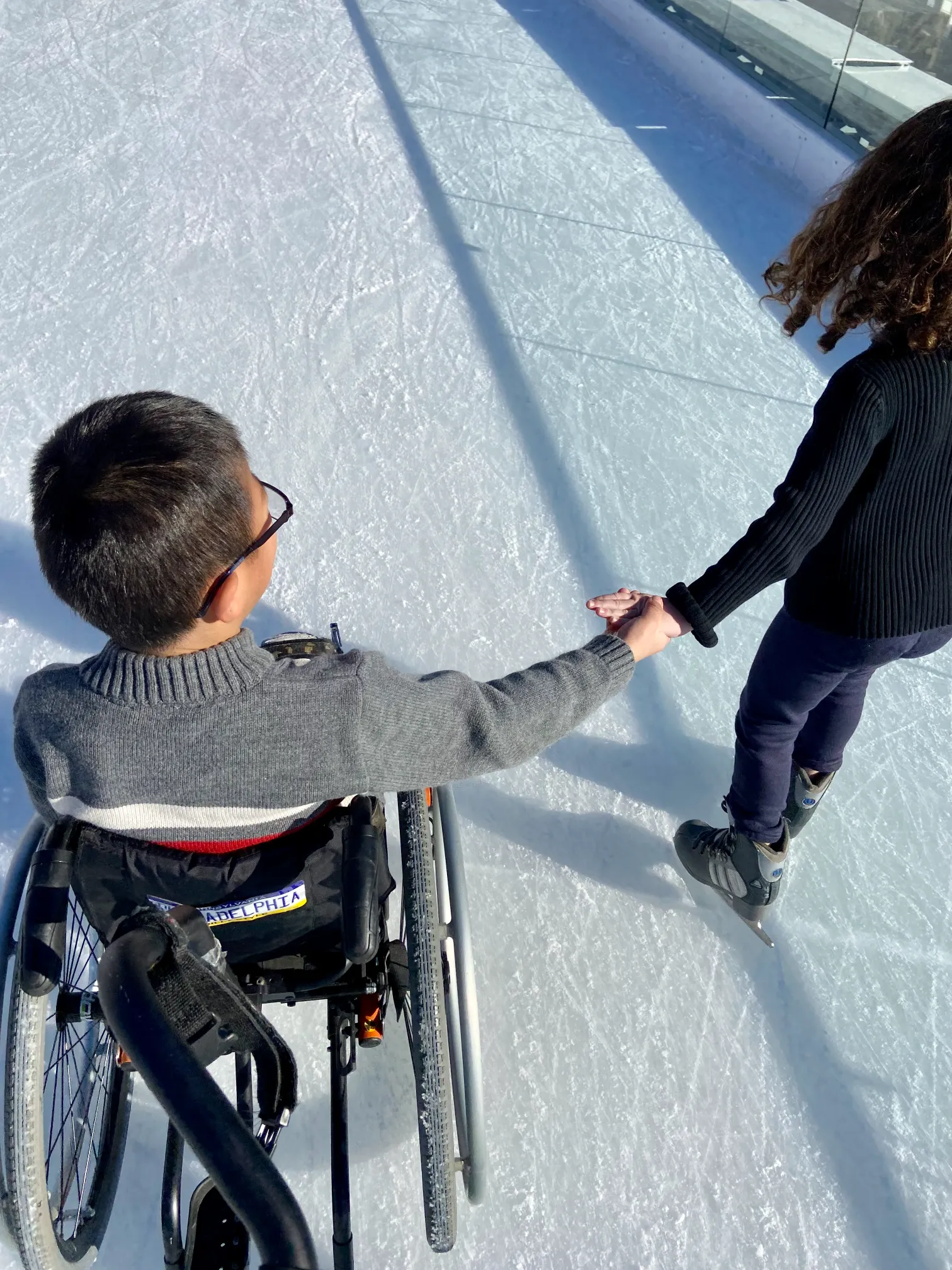Listen to this Article
Ice skating, castle tours, skiing, hiking and scaling gorges are just some of the things I assumed we couldn’t do after receiving my son’s diagnosis of spina bifida. In the past three years, we’ve done every one of those things, and many more that I thought were out of reach. The world is filled with both natural and man-made obstacles, but that doesn’t mean there isn’t a way around them. It’s time to rethink limitations and start looking at adapted adventures.
Ice skating for us means taking a wheelchair on the ice. It’s the same kind of exhilarating for a wheelchair user as it is for a walker as they zip around curves on the slippery ice. Skiing happens in a seated position, instead of standing, but again, the enjoyment is the same.
Hiking requires either smooth trails or adaptive equipment. Many times, the areas that don’t have smooth trails have their own adaptive equipment to loan.
These examples are specific to mobility needs because that’s what I’m familiar with, but adventures can be adapted for any need. We’ve shared the slopes with blind skiers, we’ve gone on guided tours with hearing impaired, and we’ve played in noisy children’s museums with children with autism.
While there is still much to be done, the modern world has come a long way in adapting for people with disabilities. Next time, before assuming you can’t do something, do a quick Google search of the site, attraction or event and add in the word accessible or adaptive. Many destinations will have information on their website. If not, it could be worth a phone call. If it’s a general activity, search the activity plus the specific need or disability. For example, I learned how to hike by Googling, “hiking with a wheelchair.” While we do most things differently, we’ve not yet found an activity that we couldn’t do at all.
It’s also helpful to find your community, so that you can ask questions about things you’re unsure of. You can find a Facebook group by searching your disability. I thought I was pretty bold to take my three-year-old son with spina bifida out of the country, until I asked about travel in a Facebook group and discovered families who travel full time without ties to one hospital or specialist. The chances are high that whatever it is you want to do has been done before.

If you’re looking for ideas on where to begin, follow along on another traveler’s journey.
Wonders Within Reach shares wheelchair friendly family adventures.
Our Blind Side is an active family of five exploring the world with a blind son.
Bethany Hildebrandt shares adventures with cerebral palsy.
Kristy Durso navigates food issues and accessibility on family trips.
Lily and Magnolia Travel explores the world with a son with autism.
Accessible Adventures shares their journeys with a rare form of epilepsy.
Niki and Jimmy shares the journey of a single mom with a son who is blind and has physical and mental disabilities.
These are just a few examples! If you have trouble finding what you need, please don’t hesitate to reach out. I would be happy to help you get started.
